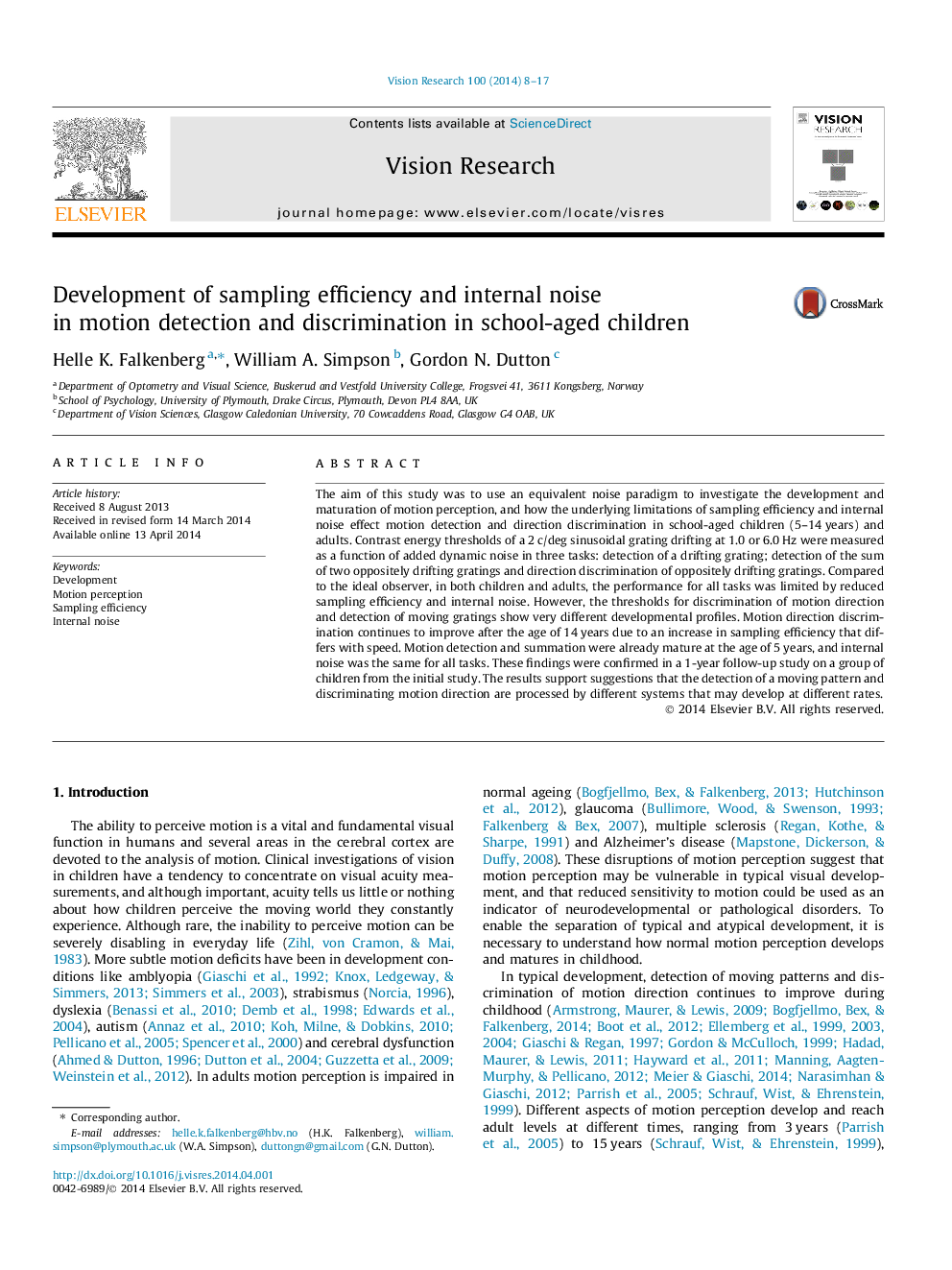| Article ID | Journal | Published Year | Pages | File Type |
|---|---|---|---|---|
| 6203320 | Vision Research | 2014 | 10 Pages |
â¢Motion detection and direction discrimination develop at different rates.â¢Detection of moving or flickering grating patterns is adult-like at 5 years of age.â¢Direction discrimination improves in development but is still immature at 14 years.â¢Development of motion discrimination is due to improvement in sampling efficiency.â¢Internal noise is the same across age, task and speed.
The aim of this study was to use an equivalent noise paradigm to investigate the development and maturation of motion perception, and how the underlying limitations of sampling efficiency and internal noise effect motion detection and direction discrimination in school-aged children (5-14Â years) and adults. Contrast energy thresholds of a 2Â c/deg sinusoidal grating drifting at 1.0 or 6.0Â Hz were measured as a function of added dynamic noise in three tasks: detection of a drifting grating; detection of the sum of two oppositely drifting gratings and direction discrimination of oppositely drifting gratings. Compared to the ideal observer, in both children and adults, the performance for all tasks was limited by reduced sampling efficiency and internal noise. However, the thresholds for discrimination of motion direction and detection of moving gratings show very different developmental profiles. Motion direction discrimination continues to improve after the age of 14Â years due to an increase in sampling efficiency that differs with speed. Motion detection and summation were already mature at the age of 5Â years, and internal noise was the same for all tasks. These findings were confirmed in a 1-year follow-up study on a group of children from the initial study. The results support suggestions that the detection of a moving pattern and discriminating motion direction are processed by different systems that may develop at different rates.
